As nothing more than an amateur photog, I’ve hardly got all (or even any) of the answers when it comes to improving one’s photography; however, as someone who has become more passionate about taking photos, I have over the years learned a few things along the way.
It seems almost comical that just a few years ago I circumvented my way around Asia for nearly 6 months with nothing more than a tiny Casio point and shoot camera set in automatic equipped with a humble 4 gb memory card. These days, on a glorious day of shooting, I might exhaust that same memory card in mere hours. It’s amazing how things change!
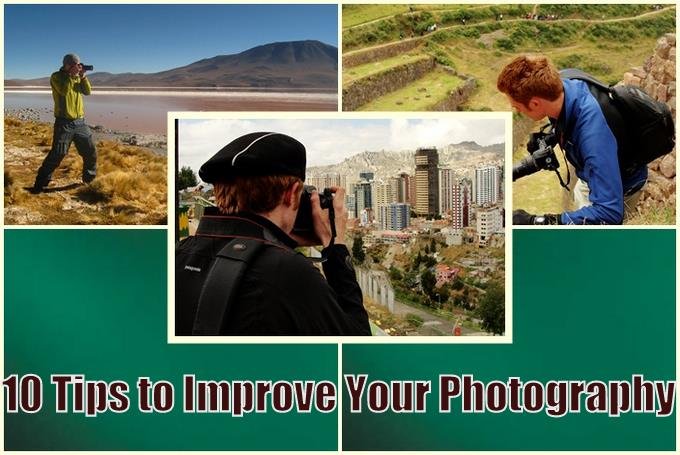
Photography has become an addictive hobby, I’m telling you! However, with that being said, it’s no coincidence that many of the top travel blogs feature stunning HD photos that capture the imagination and spirit of a particular place, region, culture, and people. High-quality images have the power to transport viewers, evoke emotions, and tell stories that words alone sometimes cannot convey.
It’s an addictive hobby, I’m telling you! However, with that being said, it’s no coincidence that many of the top travel blogs feature stunning HD photos that capture the imagination and spirit of a particular place, region, culture and/or people.
I offer the following 10 travel photography tips as a way of hopefully inspiring others to take their photography a little more seriously. Whether you’re just starting out or looking to improve your skills, these tips are born from my own experiences, trials, and errors.
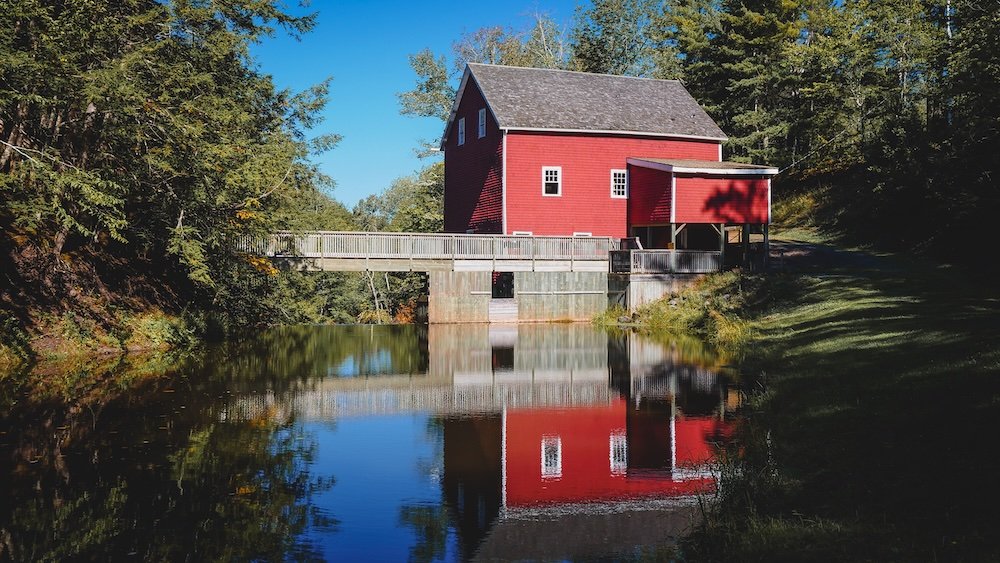
10) Primp & coif your photos as you would yourself before heading out to work
If rolling out of bed and heading to work (or some social event) without a shower, brushing your pearly whites, and running a comb through your hair sounds like a bit of a poorly hatched plan, it’s equally as obscene to think about doing it with your recently taken photos. Just as you wouldn’t present yourself to the world disheveled and unkempt, your photos deserve the same level of care and attention before they make their debut.
A few basic editing techniques and skills—such as cropping, adjusting exposure, and straightening your photos—are the travel photography equivalent of showing up to the dance sharply dressed. Editing isn’t about transforming your images beyond recognition; it’s about enhancing what’s already there and presenting it in the best possible light.
When I first started, I was hesitant to edit my photos. I thought that relying on editing was somehow “cheating” or that it diminished the authenticity of the moment captured. However, I soon realized that even the best photographers in the world edit their photos to some extent. Editing is part of the creative process. It’s your chance to correct any imperfections, bring out the colors, adjust the lighting, and crop out any distractions that detract from the main subject.
Think of your photos as raw gems that need a bit of polishing to truly shine. There are plenty of user-friendly photo editing software options out there, from Adobe Lightroom to free apps like GIMP or even mobile apps. Spend a little time familiarizing yourself with the basic tools. You’ll be amazed at how a few tweaks can elevate your images from good to great.
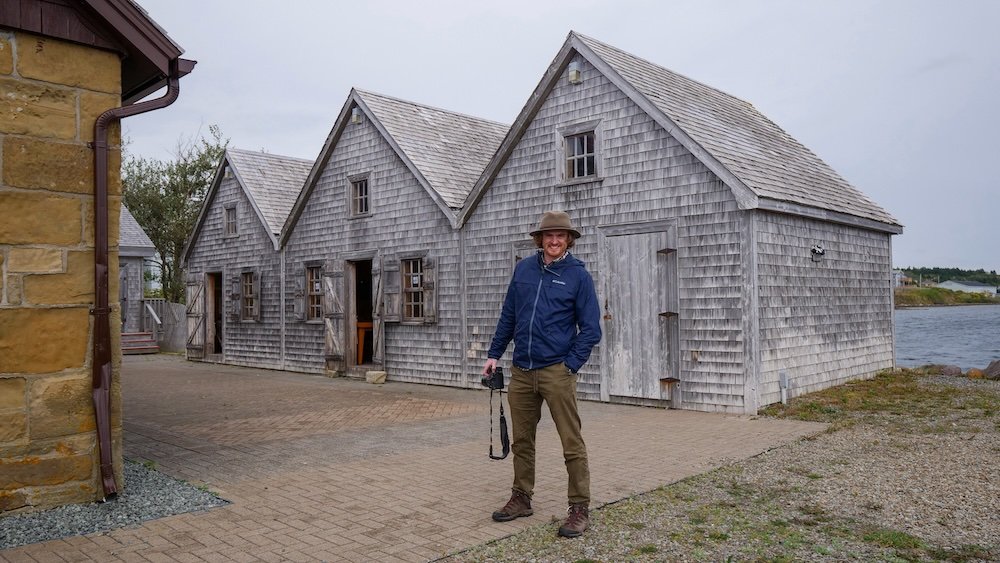
9) If you’re dressed nicely put your camera away
With all the talk about looking immaculate in point number 10, it might come as a surprise that I suggest you wear your worst while taking photos. If you’re not prepared to climb, get down on your knees, or twist your body as if playing a game of drunken Twister, chances are you’re missing out on some great angles and vantage points that ultimately lead to stunning shots.
One of the best pieces of advice I received was to “get comfortable with being uncomfortable.” That might mean kneeling on a dusty road to get that perfect low-angle shot of a local market or lying flat on your stomach to capture the reflection of a monument in a puddle. If you’re worried about dirtying your clothes, you’ll hesitate, and that hesitation could cost you a fantastic photo.
I remember once in Vietnam, trying to photograph the vibrant floating markets. To get the shot I envisioned, I needed to crouch low on a precarious boat, balancing myself while trying not to drop my camera into the river. It wasn’t glamorous—I was soaked by the end of it—but the photos were some of my favorites from the trip.
So, dress in comfortable clothes that you don’t mind getting a bit dirty. Embrace it all!
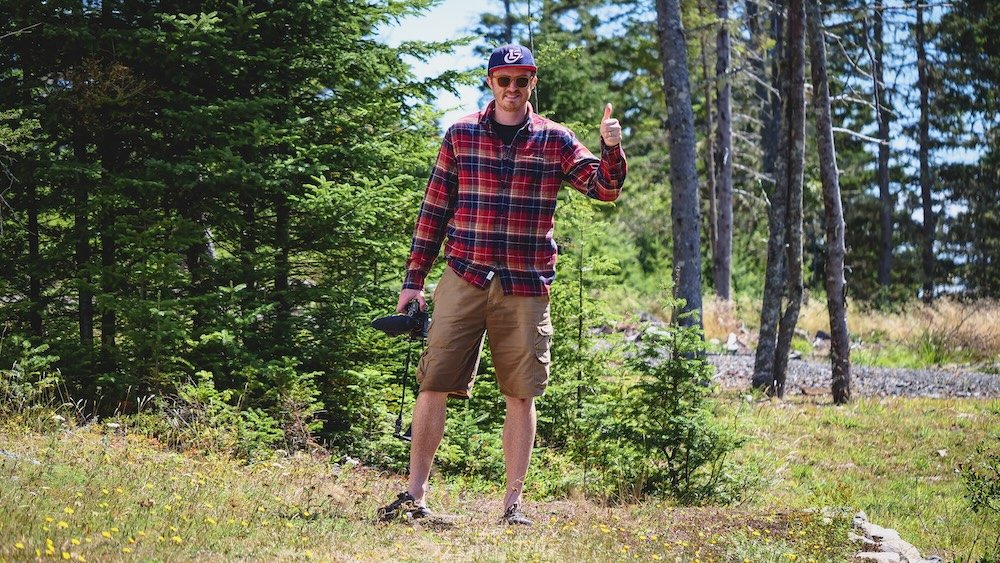
8) Think before pressing the shutter
A lot of us have grown up a little trigger-happy. I remember my first ever video game for the Nintendo Entertainment System was Duck Hunt. I know I’m pre-dating some of today’s youth with tales of such games that are more likely to be found in a museum or attic than in actual use today; however, I was rewarded greatly for standing as close to the television set as possible and blasting away. Yet, that kind of technique is not something that is going to improve your travel photography.
Believe it or not, I’m suggesting one ought to think a bit before pressing the shutter button. What is your subject? What are you trying to emphasize? Have I selected a fast enough shutter speed to capture a sharp photo? What kind of selective focus (depth of field) do I want to achieve with this photo? These are just a few questions you might want to ask yourself internally before doing the digital deed.
Photography is as much about planning and intention as it is about spontaneity. Taking a moment to consider your composition, lighting, and settings can make a world of difference. It’s the difference between a snapshot and a photograph.
When you’re mindful of your shots, you start to develop an eye for detail. You notice how the light falls on your subject, how the background complements or distracts, and how you can frame the image to tell a story. This doesn’t mean you need to overthink every shot to the point of missing the moment, but developing a habit of quick, thoughtful consideration can elevate your photography immensely.
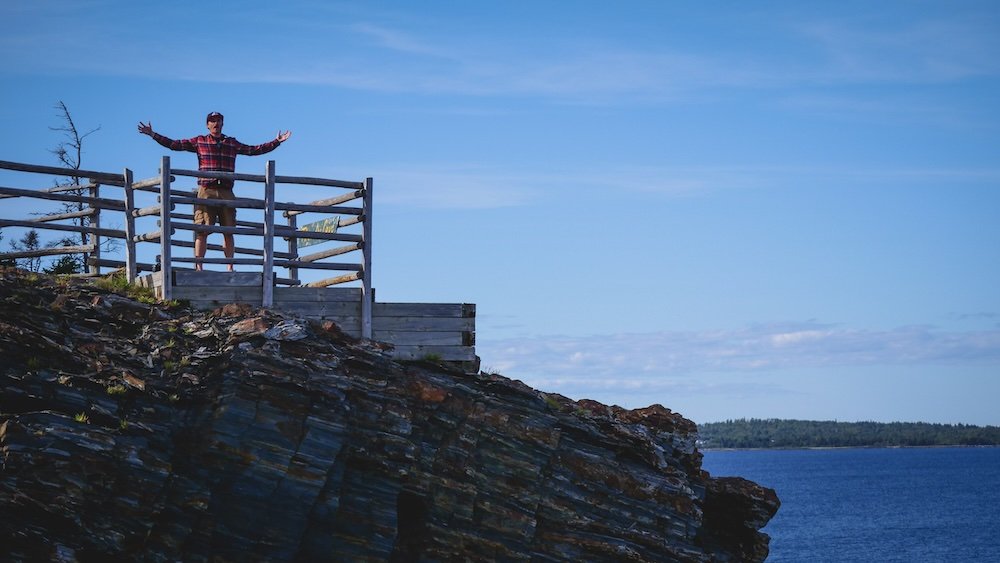
7) Delete More Photos Than You Keep
I totally get it! The fifteen photos in a row of you gorging down on that piece of cake are priceless and should forever be kept in storage. Actually, on second thought, maybe not? Honestly, one of the things that has helped me to improve my photography more than anything else is to be my own biggest critic.
I feel as though one should delete roughly half of the photos they take, if not more. Ideally, I aim for 70% or more. Why am I keeping this photo? is a question I often ask myself.
In the digital age, it’s easy to amass thousands of photos because storage is cheap, and the temptation to keep everything is strong. But quantity doesn’t equate to quality. By curating your work and being selective about what you keep, you force yourself to evaluate your photos critically. This process helps you identify your strengths and weaknesses, learn from mistakes, and focus on improving.
When I return from a trip, I go through my photos methodically. I look for images that stand out, that evoke emotion, or that tell a compelling story. If a photo is just “okay,” it doesn’t make the cut. This discipline not only helps in organizing my photo library but also ensures that when I share my work, it’s the best representation of my abilities.
Remember, it’s better to have a portfolio of a few outstanding images than a collection of mediocre ones.
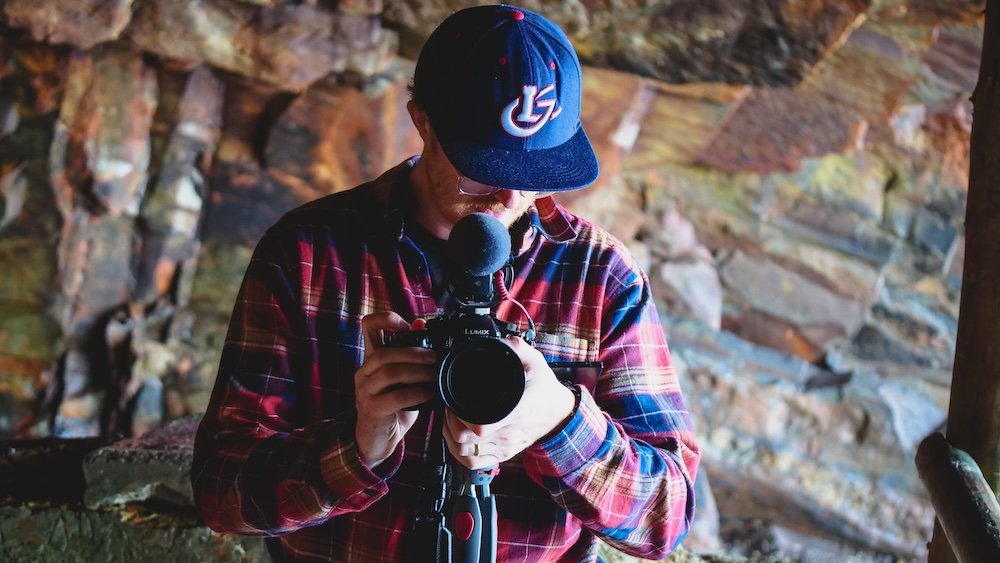
6) Lose your camera in style
Seriously, if somebody wants your camera bad enough, they’ll find a way to pry it out of your precious little hands or safely stowed backpack. It’s amazing what a lethal weapon invading your personal space will do to change your mind about what is important in life. My motto is that I’ve bought it to take photos, and I’ll lose it in style shooting as often as I can.
This doesn’t mean that I think your camera should be dangling off of your neck at all times; after all, proper discretion applies in certain circumstances. However, if you’ve purchased your camera to take photos and not collect dust, my suggestion is to use it and not live in fear.
When I first started traveling with my camera, I was overly cautious. I kept it tucked away, only bringing it out when I felt it was “safe.” Looking back, I realize how many moments I missed because I was too afraid of losing my gear.
Of course, be sensible—don’t flash expensive equipment in high-risk areas, and always be aware of your surroundings. But don’t let fear prevent you from capturing the incredible scenes unfolding around you. Insurance can replace a camera, but it can’t recreate a moment lost.
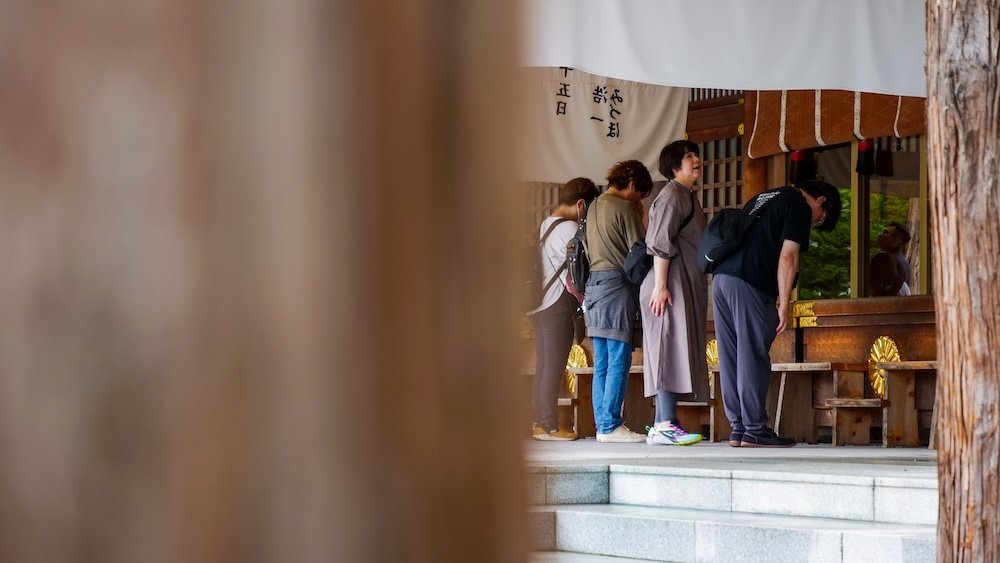
5) Conquer your fear & dare to be bold in the process
I’m shy by nature. I used to hate taking photos of people. The thought of pointing my camera at a stranger made me uncomfortable. What I’ve come to realize is that by stepping out of my comfort zone personally, it’s had an equal, if not greater, effect on my photography. I now take shots of people with confidence—both in candid situations and with posed portraits.
Any excuse that’s holding you back from taking better photos is best left behind in the rear-view mirror. Whether it’s fear of rejection when asking someone for their portrait or hesitation in trying a new technique, pushing past these barriers is where real growth happens.
So, dare to be bold. Try that unconventional angle, experiment with settings, and don’t be afraid to engage with your subjects. The worst that can happen is someone says no, but the best that can happen is you capture something truly special.
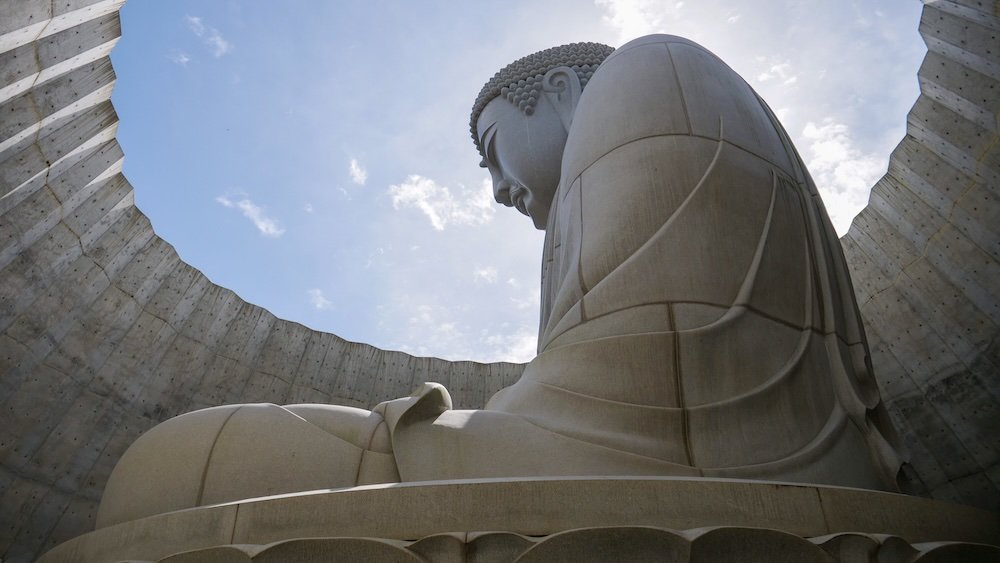
4) Hitting the bullseye is great in darts, not as ideal in photography
If you’re nailing the bullseye time and again with precision, one might call you a talented shot in darts. In photography, if your subject is situated in the dead center of all of your shots, chances are you’re taking less interesting photos. Compositional dos, such as the rule of thirds, suggest one place their subject away from the center.
It’s certainly “just fine” to have your subject positioned dead center from time to time, but one thing I’ve noticed about some galleries from those just taking up the hobby is that this is happening far too often.
Learning about composition can dramatically improve your photos. The rule of thirds involves dividing your frame into a grid of nine equal parts and placing your subject along these lines or their intersections. This creates more balance and interest in the image.
But don’t stop there. Explore other compositional techniques like leading lines, framing, symmetry, and patterns. By being mindful of how you compose your shots, you guide the viewer’s eye and enhance the storytelling aspect of your images.
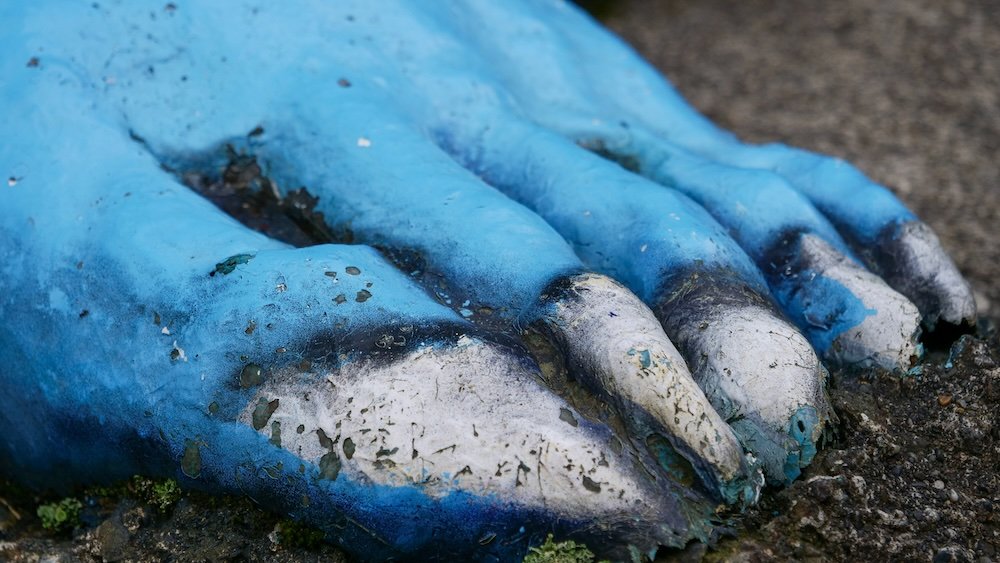
3) Notice the world in a different way
Do you remember when you bought that shirt you thought was unique, only to find out every 10th person you passed down the street seemed to also be wearing it? Quickly look around the room where you’re reading this article right now and notice something red. Have you found something yet?
Okay, now tell me what you found in the room that was green.
The fact is that we see the world in a selective manner, and this bias is reflected in your photography as well. Try going out and trying to capture certain tones, colors, or shapes as an exercise for the day. It will not only help you to see the world more creatively, but it makes for a fun challenge.
When you consciously decide to look for specific elements—be it a color, texture, or pattern—you train your eye to notice details that might otherwise go unnoticed. This heightened awareness can lead to more interesting and unique photographs.
I once spent a day in Tokyo focusing solely on reflections. By narrowing my focus, I discovered a whole new perspective of the city—reflections in puddles, windows, and even sunglasses. It was an eye-opening experience that enriched my photographic repertoire.
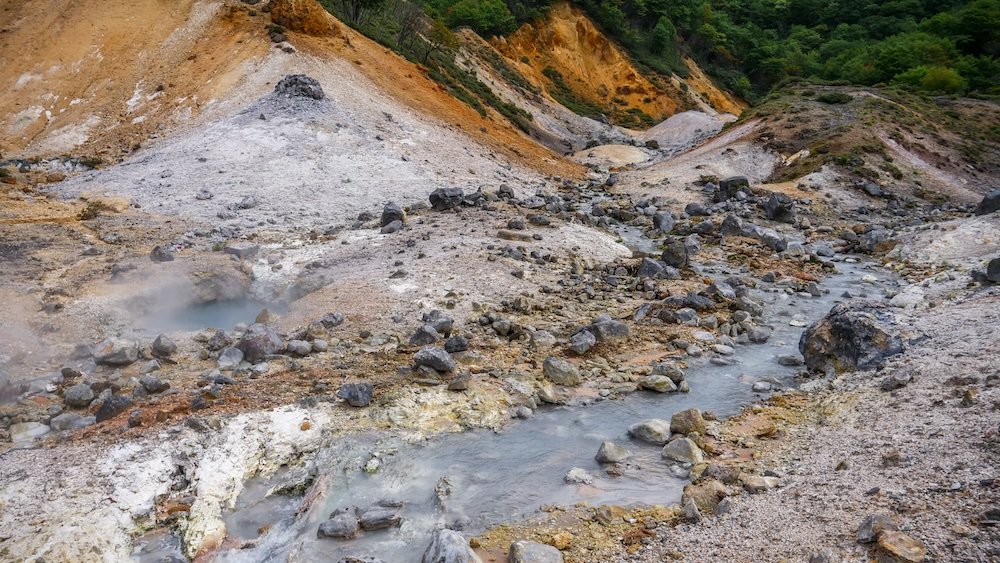
2) Reduce the shots of YOU
Remember the example of those splendid shots of you eating cake from point number 7? You’re going to hate me all over again. Honestly, the name of the game when it comes to improving your photography is not to shove yourself into every single frame you ever take. I’m so sorry.
My sage-like piece of advice (coming from a fool) is to start noticing everything in front of you instead of having to be in front of everything.
Selfies and personal photos have their place—they capture memories and personal experiences. But if you’re serious about improving your photography, shift the focus away from yourself and onto the world around you. Challenge yourself to tell stories through your images without relying on your presence in them.
By doing so, you open yourself up to a world of subjects and scenes that can be far more compelling. You learn to observe, anticipate moments, and capture the essence of a place or culture.
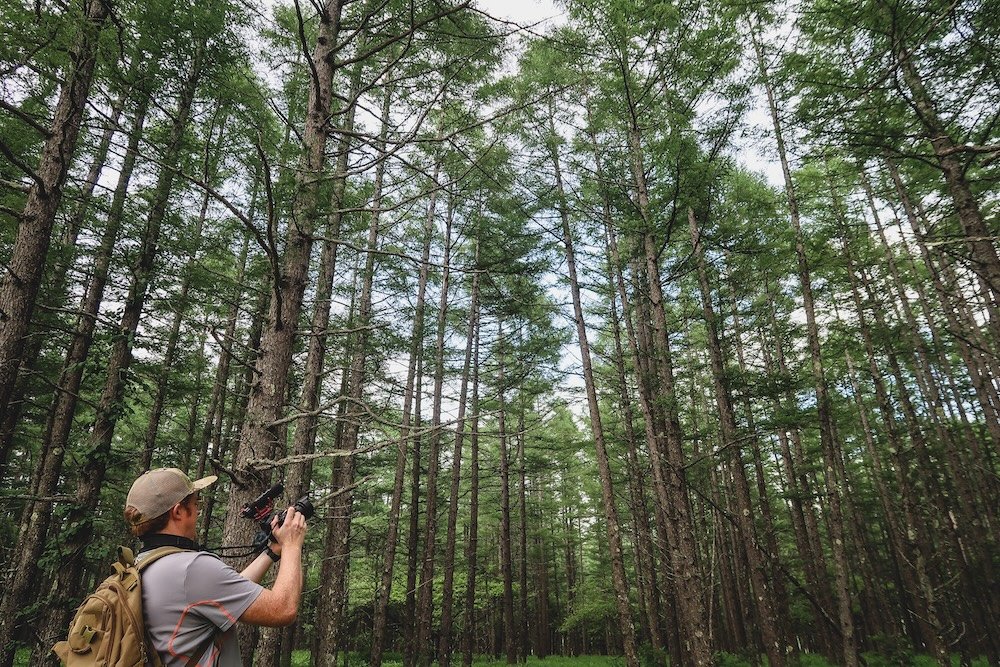
1) Learn as many rules about composition as you possibly can & then break them all…OFTEN
There are a plethora of compositional dos and don’ts one can potentially learn to improve their photography. I suggest studying them all and applying them in appropriate situations; however, I can’t stress enough to also be prepared to break them just as often.
Photography is about emotions and feelings as much as it is about technical skills. Ultimately, it’s about doing what feels right.
Rules are guidelines that help you understand the fundamentals of good composition. They provide a foundation upon which you can build. But creativity thrives when you push boundaries and experiment beyond conventional norms.
Some of the most iconic photographs break traditional rules, yet they resonate deeply because they evoke emotion, tell a powerful story, or offer a unique perspective. Don’t be afraid to take risks. If you feel that centering your subject creates the impact you want, go for it. If tilting your camera adds dynamism to the shot, try it out.
The key is to know the rules well enough to break them intentionally and effectively.
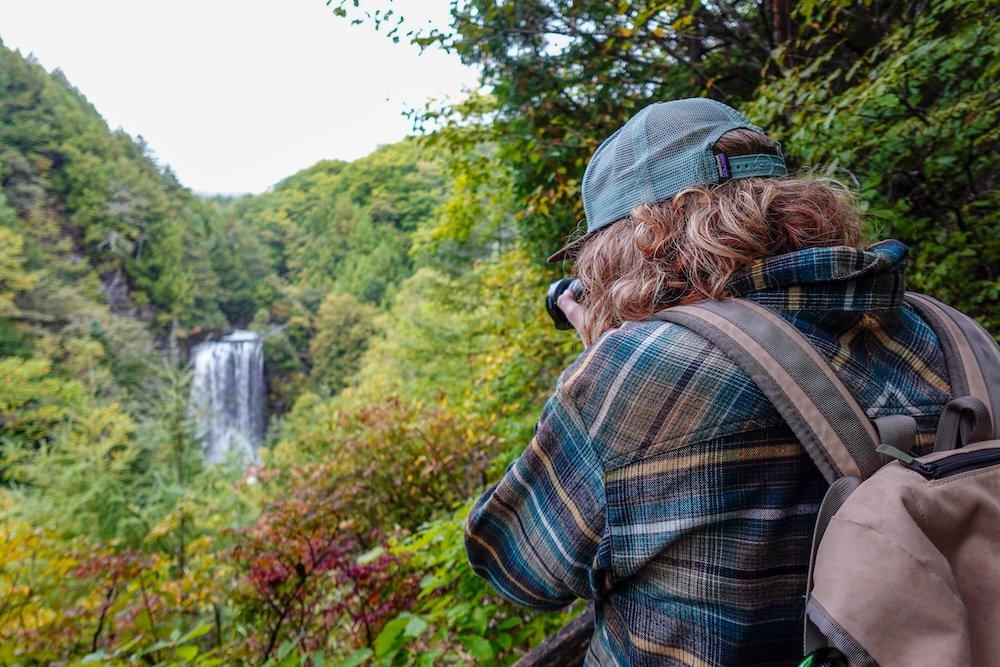
Taking Your Travel Photography Out Into the Real World
You can read all the tips in the world, but your photography only really changes when your feet hit the pavement, sand, or cobblestones and the camera leaves the bag.
Here’s how to turn those ideas into an actual day of shooting that feels fun, not like homework.
A Simple “Photo-First” Travel Day
Think of your day in chunks: morning, midday, late afternoon, evening. Each has its own strengths.
Morning: Soft Light and Empty Streets
Mornings are gold for travel photography.
- Fewer people in your frame
- Softer, more flattering light
- Locals actually living their lives instead of performing for tourists
Things that work beautifully in the morning:
- Old town streets before shops open
- Fishermen at the harbour
- Markets as stalls are being set up
- Temples, churches, mosques before big crowds
Give yourself one mission for the morning, like “only shoot people working” or “only shoot reflections”. It keeps you focused and creative at the same time.
Midday: Harsh Light, Strong Shadows
Midday gets a bad reputation, but it’s still usable if you adjust.
Instead of fighting the overhead sun, lean into what it gives you:
- Strong geometry and shadows
- Details and close-ups
- Interiors (museums, cafés, temples)
Midday can be great for:
- Shooting patterns on floors and walls
- Backlit silhouettes inside markets or stations
- Food photography at lunch when the table is well lit
If the light is really ugly, give yourself permission to put the camera away for an hour. Eat, rest, recharge. Not every minute of the day needs to be “productive”.
Late Afternoon and Golden Hour: Your Best Friend
Late afternoon is when the travel photography gods clock in for their shift.
- Warm, sideways light
- Long, interesting shadows
- People outside relaxing, socialising, playing
Build your day so you’re somewhere interesting for golden hour:
- A viewpoint over the city
- A busy square
- A waterfront promenade
- On a hill or rampart looking down over roofs
This is when you get your “wow” shots. Plan around it as much as possible.
Evening and Blue Hour: Atmosphere Over Detail
Once the sun drops, you’re chasing atmosphere more than anything else.
- Neon signs
- Warm café interiors
- Squares lit by street lamps
- Reflections on wet streets after rain
If your camera struggles in low light, focus on wider scenes instead of tiny details, and steady your body against walls, railings, or lamp posts to avoid blur. Your tripod can stay in the room more often than not.
Quick Decision Guide: What to Shoot, When
Here’s a simple way to think about matching subjects to time of day:
| Time of Day | Best Subjects | Avoid When Possible |
|---|---|---|
| Early Morning | Streets, workers, markets, temples | Flat grey skies with no interest |
| Late Morning | Architecture, details, indoor scenes | Big, contrast-heavy portraits outside |
| Midday | Patterns, interiors, food, abstracts | Wide landscapes with washed-out sky |
| Late Afternoon | Portraits, city scenes, landscapes | Hiding indoors the entire time |
| Blue Hour/Night | Lights, streets, reflections, signs | Fast-moving subjects if your gear is basic |
You don’t need to memorize this. Just glance at it when planning your day and you’ll already be ahead of most people wandering around at noon wondering why everything looks flat.
Simple Gear Setups That Actually Work When You Travel
Most of us aren’t travelling with a rolling suitcase full of lenses. You’re probably balancing photography with backpacks, kids, snacks, and the occasional melting ice cream.
Three Realistic Setups
| Setup | What It Is | Best For | Trade-Offs |
|---|---|---|---|
| The Minimalist | One small camera / one zoom lens | Light packers, city breaks | Less reach, fewer creative options |
| The Storyteller | Zoom lens + one small prime (e.g. 35mm/50mm) | People, streets, food, daily moments | A bit more weight |
| The Enthusiast | Wide zoom + telephoto zoom | Safaris, mountains, wildlife, big landscapes | Heavy, more lens changes |
If you’re not sure where you fit, the “Storyteller” setup is the sweet spot for most travellers. One flexible zoom, one fast little prime for low light and portraits, and you’re set.
What You Really Need in Your Bag
Regardless of your setup, there are a few things that make life easier:
- Extra memory card (or two)
- Spare battery (your future self will hug you)
- Small microfiber cloth for lenses
- A lightweight, packable bag you can swing to the front in busy areas
- A simple rain cover or even a ziplock bag for sudden downpours
It’s not glamorous, but it’s the unsexy, practical stuff that saves you more often than the fancy lens.
Turning Trips Into Visual Stories Instead of Random Snapshots
Most people come home with a hard drive full of individual pictures. You want to come home with sequences that feel like stories.
Think in “Scenes”, Not Single Shots
When you arrive somewhere, imagine you’re filming a short travel documentary in still frames.
For each place, look for:
- Wide shot – the establishing scene: skyline, street, market
- Medium shot – people at work, a stall, a doorway, a café table
- Detail shot – hands preparing food, dusty windows, signs, patterns
- Moment shot – a laugh, a hug, a kid chasing pigeons, someone staring out to sea
- Closing shot – sunset, empty chair, last tram, street at night
A simple shot list like this gives your gallery structure.
Example: Morning at a Market
- Wide: Entrance to the market, people streaming in
- Medium: Vendor arranging fruit at a colourful stand
- Detail: Close-up of weighing scales or coins changing hands
- Moment: Two vendors laughing together, kid stealing a grape
- Closing: Sweeping up at the end, empty stalls, chairs stacked
You’re telling the story of the place from opening to closing, not just saying “Look, tomatoes”.
Getting Better People Photos Without Feeling Like a Weirdo
You can travel the world and still end up with galleries full of buildings if you never get comfortable photographing people. They’re the heart of travel images.
Candid Etiquette
Candid doesn’t have to mean sneaky.
- Start wide. Shoot scenes with multiple people and slowly refine your framing.
- Stay a little longer in one place. When people see you’re not just darting around, they relax.
- Watch for gestures: hands, posture, faces mid-conversation, someone pausing to think.
If someone clearly doesn’t want to be in the frame, respect that immediately. There are always other stories in the same street.
Asking for Portraits Without Overthinking It
You don’t need a perfect script.
- Start with a smile. Always.
- Use simple language and gestures. Point to your camera, then to them, raise your eyebrows.
- Show them the photo afterwards and say thanks.
If they say no, smile again, say thank you anyway, and move on. The world does not end.
Small Tricks That Help
- Position yourself where people naturally pause (doorways, crossings, food stalls) so you’re not chasing them.
- Use whatever language you know: hello, thank you, “beautiful”, “okay?”. Small efforts go a long way.
- Keep your camera at chest height between shots so you’re not constantly “aiming” at people like a cannon.
The more you do this, the less your brain screams at you that you’re being awkward. The fear doesn’t vanish, but it shrinks.
Working With Light Instead of Fighting It
Gear helps, but understanding light moves the needle far more.
Reading the Light in 10 Seconds
When you arrive somewhere, ask yourself:
- Is the light soft or harsh?
- Where is it coming from? Above, behind, side?
- What is brighter – the sky or the subject?
Once you know that, you can make basic decisions.
Quick “What Do I Do?” Table
| Situation | Simple Fix |
|---|---|
| Midday sun, harsh shadows on faces | Move into shade, or turn subject away from sun |
| Subject dark, background bright | Get closer, expose for the subject, crop tight |
| Flat light, cloudy day | Focus on colours, patterns, people, reflections |
| Strong side light (morning/evening) | Use it for drama: texture, profiles, silhouettes |
| Backlit people at sunset | Either expose for sky (silhouette) or use fill (reflective surfaces, light walls, or a tiny bit of flash) |
You don’t need to know every technical word. Just pay attention to how light shapes faces, walls, and streets, and move your feet until it looks better.
A Simple On-the-Road Workflow So Your Photos Don’t Vanish
If you travel long enough, you’ll eventually meet someone who lost all their photos on a trip. Try not to be that story.
Daily “Photo Hygiene” Routine
At the end of each day, run through a small ritual:
- Back up your cards
- Copy everything to your laptop or tablet.
- If you don’t carry a computer, use a portable backup drive designed for memory cards, or a phone with enough space and a card reader.
- Quick first cull
- Delete obvious failures: totally blurred, misfires, accidental floor shots.
- Star or flag anything that jumps out as special.
- Basic organisation
- Sort by date and location: “2025-07-10_Helsinki_Suomenlinna” style folders.
- Even this simple naming keeps things sane when you’re editing months later.
- Secondary backup if possible
- Portable drive, cloud, or both.
- If you’re travelling with someone, keep one backup in their bag or room, not sitting next to yours.
It sounds like a chore, but it takes less time than scrolling social media in bed and future you will be very grateful.
Little Creative Exercises You Can Do Anywhere
Photography improves when you play. Not when you stare at menus wondering if you should shoot at f/4 or f/5.6.
One Lens, One Day
Pick one focal length (35mm or 50mm equivalent works really well) and commit to it for a full day.
- No zooming.
- No “but I can’t reach that thing over there”.
You’re forcing yourself to move, think about distance, and get more intimate with scenes.
The Colour Hunt
Choose a colour in the morning. Red, blue, yellow, whatever calls to you that day.
- Spend the day quietly collecting that colour: doors, jackets, signs, food, cars.
- Try wide shots and close-ups.
At the end of the day, you’ll have a little colour story of the city, and your eye will be sharper for it.
10 Frames, 1 Subject
Find a subject that interests you: a street musician, a door, a small shrine, a food stall.
Now give yourself only ten shots total to capture it.
- Different angles (high, low, side, behind)
- Different distances (wide establishing, medium, detail)
- Different moments (before customers, mid-transaction, post-cleanup)
You’ll start thinking harder about each frame instead of spraying and praying.
The No-Sky Challenge
On days where the sky is flat and boring, ban yourself from including it in your photos.
You’ll suddenly notice:
- Textures on walls
- Cobblestones under your feet
- Reflections on windows
- Hands, feet, and gestures
When the sky finally is spectacular again, you’ll know how to use it as one element of a scene, not the whole show.
Travel photography questions & answers: practical tips, gear advice and real-world tricks
Do I really need a fancy camera for travel photography, or is my phone enough?
Nope. You absolutely do not need a fancy camera to start taking better travel photos. Modern phones are wildly capable, especially if you learn basic composition, light and timing.
That said, a dedicated camera (even an older used one) usually gives you better low-light performance, more control and nicer background blur. Think of it this way: your phone is perfect for everyday moments and quick sharing; a small camera with a decent lens is great when you want more creative control and higher-quality files.
If your budget is tight, focus on skills first and gear later. A thoughtful phone shooter will always beat someone with an expensive camera who just points and prays.
What is the quickest way to improve my travel photos before my next trip?
Honestly, the fastest upgrade is slowing down. Instead of firing ten frames and walking away, pause for ten seconds and ask: what is my subject, what is distracting, and what is the best angle?
If you do nothing else, work on three things: steadier framing (hold the camera with two hands and exhale as you shoot), cleaner backgrounds (take one step left or right to remove clutter), and better light (move your subject into softer or sideways light). Those three alone can transform your photos without buying anything new.
How much should I edit my travel photos without making them look fake?
It depends. My rule is to edit until the photo looks like the scene felt, not like a different planet. If the colours are screaming and the sky looks radioactive, you have probably gone too far.
Stick to simple adjustments: exposure, contrast, white balance, a touch of saturation and sharpening. Crop out distractions, straighten horizons and gently nudge the mood, but keep skin tones believable and skies within reason. When in doubt, walk away for a few minutes and look again with fresh eyes. If the edit still feels natural, you are fine.
When is the best time of day to shoot while I am traveling?
Golden hour is your best friend. The hour after sunrise and the hour before sunset give you soft, warm, sideways light that makes almost everything look better: streets, faces, mountains, you name it.
Early morning is perfect for quiet streets, markets setting up and locals going about real life. Late afternoon and early evening are ideal for city scenes, portraits and landscapes with drama. Midday can still work, but it is better for details, strong shadows and indoor scenes rather than big wide landscapes.
How can I practice travel photography at home so I am ready on the road?
Practice at home is huge. Treat your own neighbourhood like a destination: shoot markets, parks, bus stops, coffee shops and street corners as if you were just passing through.
Try little self-assignments: one-lens-only days, colour hunts, ten-frames-only challenges or telling the story of a single café from opening to closing. The more you play with angles, light and timing at home, the more instinctive it feels when you land somewhere new and the clock is ticking.
How do I photograph strangers without being creepy or disrespectful?
Respect first, photo second. Start with wider scenes so people are part of the environment, not the sole subject, and linger in one spot long enough that you are not darting around like a paparazzi.
If someone is clearly the focus, a quick smile and small gesture toward your camera can work wonders. In many places, a friendly nod and showing them the photo afterward breaks the ice. If anyone looks uncomfortable, lowers their head or waves you off, take the hint immediately and move on. The world is full of interesting faces; you do not need a single shot badly enough to upset someone.
I am shy. How do I build confidence to photograph people while I travel?
Slowly. Start by photographing people from behind or in silhouettes so you are not confronting anyone head-on. Then work up to scenes where people are small in the frame but still an important part of the story.
Next step is low-pressure interactions: vendors, street performers, guides or people who are already engaging with tourists. Have your camera settings ready, ask quickly and show the result with a smile. Every positive interaction chips away at the fear. The nerves never vanish completely, but they shrink to the point where they stop controlling you.
What basic gear do you recommend if I want to travel light but still get great photos?
I like a simple two-piece setup. One small camera with a versatile zoom lens for 90 percent of situations, plus a small fast prime (like a 35mm or 50mm equivalent) for low light and portraits.
Add a couple of boring but essential items: a spare battery, an extra memory card, a microfiber cloth and a lightweight bag you can swing to the front in busy areas. That combo keeps you light on your feet while still giving you options for streets, food, landscapes and portraits without feeling like a pack mule.
How do I keep my camera and photos safe while traveling?
Vigilance beats paranoia. Keep your camera in a cross-body strap or a small bag that stays in front of you in crowds, not dangling on your back. In busy areas, avoid flashy branded straps and do not leave gear sitting on café tables or bus seats.
Back in your room, do not store all your eggs in one basket: spread cards, hard drives and cash between a few spots. Use simple room safes or luggage locks where possible. And remember, gear is replaceable, but you can lower the risk by keeping things discreet and staying aware of your surroundings.
What is a simple backup routine so I do not lose all my images on a trip?
Redundancy is the goal. At the end of each day, copy your photos from the card to a laptop or tablet, and then to a small portable drive if you have one. If you are travelling light, a phone with enough space and a cheap card reader can work in a pinch.
If you can manage it, keep one backup in a different bag or suitcase from your main gear so that one theft or spill does not wipe out everything. Cloud backups are great when Wi-Fi allows, but I would still treat a physical copy as your main insurance policy on the road.
How do I get good photos in harsh midday light or bad weather?
Midday and bad weather are not a write-off; you just need a different mindset. In harsh sun, look for shade, side light and strong graphic shadows rather than delicate portraits. Focus on details, patterns, reflections and interiors where the light is softer.
On grey or rainy days, lean into mood. Wet streets, reflections, umbrellas and glowing windows can be more interesting than blue skies. If the sky is awful, simply keep it out of the frame and concentrate on texture, colour and people. You are not married to blue skies to make good photos.
How can I tell a story with my photos instead of coming home with random snapshots?
Think in sequences, not single shots. When you arrive somewhere, imagine you are shooting a tiny photo essay: a wide establishing shot, a few medium scenes, some close-up details and a final closing image.
For example, at a morning market you might show the entrance, a couple of stalls, hands exchanging money, a moment of laughter and then the sweep-up at the end. If you consciously look for those beats in a story, your galleries start to feel like little journeys rather than a pile of unrelated images.
How many photos should I take in a day, and how ruthless should I be when deleting?
More than you think, but less than your memory card allows. I am a fan of shooting plenty in the moment and being quite ruthless later. On a busy day I might shoot a few hundred frames and comfortably delete half or more on first pass.
Ask yourself for each image: does this add something, or is it just another near-duplicate? Keeping fewer, stronger photos makes editing, sharing and backing up much easier. Your future self will thank you for not having to dig through twenty versions of the same doorway.
Any tips for balancing photography with non-photographer friends, partners or kids?
Absolutely. The key is to separate “photo time” and “no-photo time”. Get your big shooting done early in the morning while everyone else is sleeping in, then put the camera away for lunch, family time or certain evenings so people do not feel like they are on a permanent photo shoot.
When you are out together, move in waves: walk with them, then occasionally ask for two minutes when you see something you cannot resist. They keep strolling, you grab the shot and catch up. Agreeing on this rhythm ahead of time keeps resentment low and makes everyone feel considered.
How do I avoid taking the same cliché shots everyone else has at famous places?
Start with the cliché, then move on. Take the obvious postcard photo first just to get it out of your system, then give yourself five or ten minutes to find something different.
Walk around the edges, look for reflections, shoot from higher or lower angles, include locals, focus on details or photograph people interacting with the landmark instead of the landmark itself. You are not trying to invent a completely new angle on the Eiffel Tower; you are just trying to add a little more of your own curiosity into the frame.
Are RAW files worth shooting for travel photography, or should I stick to JPEG?
Usually, yes. RAW files give you much more flexibility to fix exposure, white balance and shadows later, which is a lifesaver for tricky lighting on the road. The trade-off is bigger file sizes and a bit more work in editing.
If you do not want to deal with RAW every day, a good compromise is shooting RAW on important days (big hikes, once-in-a-lifetime sights) and JPEG on casual days, or using a RAW+JPEG mode and keeping RAW only for your favourite frames. The more you enjoy editing, the more RAW begins to feel worth the extra space.
Final Thoughts: 10 Tips To Improve Your Travel Photography
So there you have it! A whirlwind tour through my top ten tips for elevating your travel photography from “meh” to “wow!” If you’ve stuck with me this far, give yourself a pat on the back. You’ve proven that you’re serious about stepping up your photography game—or at least that you’re really good at procrastinating. Either way, we’re in this together!
Remember, photography isn’t just about capturing that perfect sunset or the hundredth photo of your feet against a backdrop of some exotic beach (seriously, we get it—you have feet). It’s about telling stories, evoking emotions, and occasionally realizing that you’ve been shooting with the lens cap on for the past hour.
Don’t be afraid to make mistakes—after all, even the most seasoned photographers have accidentally taken a dozen shots of the inside of their camera bags. Embrace the blurry photos, the accidental selfies, and the photobombs by that random guy who always seems to pop up just as you press the shutter. They’re all part of the grand adventure!
Happy shooting, and may your memory cards always have space for one more photo!

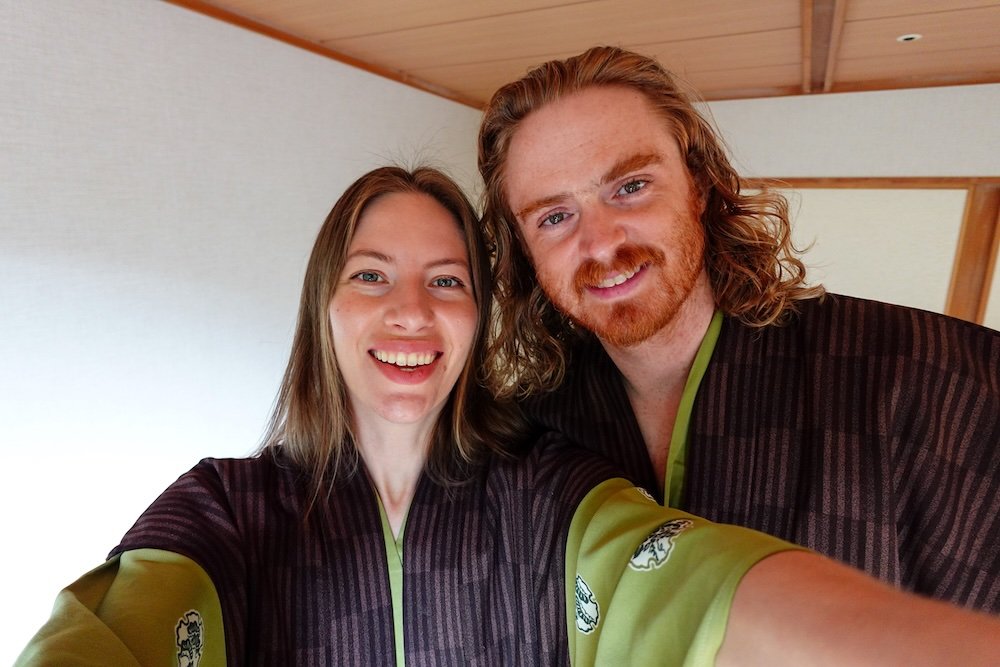


Choosing the best scenic place is one of the best thing to improve your travel photography, I guess.
Great post Samuel. All of them are great advice. I am terrible at #5. I shy away and miss so many moments with people or I hesitate and the moments gone. I totally agree with #3. We spent a few days with a professional photographer and he mentioned about different shapes in the shot, colours, framing, lighting and the height of the camera. Best tip he did give us was “Use your feet as much as your eye”.
Awesome points Samuel, though I have to disagree with # 7!
Those 10 tips cover almost all I’ve learnt about photography in the past 2 years or so. Whether you’re shooting insects (my 2nd fav) or clouds (#1), contrast is everything.
My only problem is my lack of possession of a HUGE aperture camera. The panoramic mode is great for clouds, but low intensity shots are just worthless in capturing what I actually want! Using even the simplest of programs like Picasa lets me make up for the contrast and intensity, but the resolution just isn’t there.
Lack of a discernible focus anywhere in the frame is especially bad.
Shooting videos of evolving low-alt clouds is extremely taxing due to high wind speed.
Though I’m not much of a traveler, and people are not my subjects of choice at all, those tips are great 🙂
Great tips man- i especially love the one about being bold and taking pictures of people. I recently have gotten into photography and have fallen in love with it! I’ve noticed that some of my best pictures have been candid of random people from places I’ve been. Overall, snapping pictures of unsuspecting people is one of my favorite strategies for getting pictures. Its great except when you are in a country like Ghana where they REALLY dont like people taking pictures of them.. they think you are trying to exploit them which is frustrating because that is not the case at all. I literally got yelled at by Ghanians when I was trying to take some pictures. Luckily, you can still always play the dumb tourist card 😉
Nice list – I think something good to add is the ability to get out of bed nice and early. Its a great time to be taking photos and generally no-one else is around
Great tips Samuel. What camera do you use?
Thanks Sophie,
I’m currently using a Sony Alpha A65 body with 18-250 mm lens and 50 mm 1.7 🙂
Some excellent advice here, especially point number two. Now if you want to make a monumental contribution to humanity (possibly even Nobel Prize worthy), you’ll have that point translated into Japanese, Chinese and Korean.
LOL, having been based in Korea (for 3 years) and Asia (for nearly 6) I hear what you’re saying 😛
Great advice – I especially agree about the deletion rule. It describes what I’ve been doing for years. Anyhow, you forgot an importan, 11th rule:
TAKE PHOTOS! The moment won’t come again, maybe you’ll never be at that location in your life, maybe the subject you wanted to capture will be gone in a minute/tomorrow/next time. Even if everythings seems so static and there forever – experience teached me that it might no longer be there after just blinking an eye. Don’t get me wrong, I’m not talking about snapshooting, all your rules apply. I am talking about not being too lazy to take that shot NOW.
Awesome! There is never too much of photography tips or advices, in my opinion. I’ll try to follow your advice and go out trying to capture certain tones, colors/shapes for a day!
We use to get complaints that we take too few photos of ourselves…. ha ha…
LOL, I honestly get that complaint as well. I take too few of myself as well.
Great advice, I’ll have to try out some of these techniques on my next vacation
Thanks Rich, glad you found this helpful 🙂
Great Tips Samuel. I have recently started a travelling around my country – India and your tips will come a long way in capturing good photographs on the road.
Thanks
Venky
That’s great Venkat! I’m glad the article was useful. I’m very anxious to get back to India for more adventures and (of course) more photos 🙂
Great tips! I’d add explore angles, take shots from a different perspective, avoid overexposure/blur/camera shake.
Great tips to add! Thank you 🙂
Wow.. number 7 would be hard for me! Deleting more pictures than I take?! I think you just described me.. but its definitely a tip I’ll start working on. I know more than half the pictures I take aren’t that great.
Glad I found you!
Derek, that is a hard one to follow. I have to admit I sometimes over-rate my own photos. Sometimes the more critical you are the more you can improve your eye 🙂
This is great advice! I like the rule about learning about composition, but not being afraid to break the rules in order to really capture the emotion or essence of the place. Your photos are excellent! Thanks for sharing the tips!
Thanks Ellen! Breaking the rules is fun…in just about any subject 🙂
Some great tips Sam!
Thanks Federico 🙂
The best tip I have ever read is once you take a shot turn around 180 degrees and take a shot of what was behind you. It makes for an interesting story.
That’s a great tip Ayngelina. I’ll remember that one 🙂
Well said, it seems often the main subject as you noted is dead center. Come on people, try the 1/3 spacing rule.
Hahaha…yeah, that’s so true Kurt.
I like your comment about reducing the “shots of YOU”. I barely have any really good photos of myself in places because I’m usually the person behind the lens. Meanwhile, my friends get tons of great shots to run home and show the folks.
I’m the same way! I suppose the tip is really only for those who have to be in every photo. I’m rarely in any of mine to the point I should try to make more of an effort.
I usually travel alone, so it’s a bit hard to take self portraits on the go 🙂
Also, clients don’t want to see my face in their images XD
Good point Davide! 🙂
Nice tips! I’d add a couple myself:
1. work your subjects: don’t limit yourself on a shoot per subject, keep shooting and experiment framings and compositions;
2. prepare before leaving: study guidebooks, look at other photographer’s pictures and so on (I’ve blogged about it recently).
Those are great additional tips Davide. I personally studied a lot about photography in 2009. I’m really busy these days so I’ve let that slide a bit. I need to get back into the books.
More than books, I’d say photo books. You need just one good technique book, after that you should keep developing your vision.
You have to train your eye, and photo books are the way to go.
Great tips Sam for an L plate photographer. I really must learn to delete a lot more than I do and also take your advice about thinking before pressing the shutter
Thanks Jenny, I also need to remember my own advice more often as well 🙂
Thanks so much for this! Everyone knows I am NOT a photography expert (…), so I really appreciate the help!
Hey Julia,
I also don’t consider myself an expert. I’m glad you found this helpful!
Good tips! I need to work most on conquering my fear and put myself out there more often and actually ask people if they wouldn’t mind being photographed…
Hey Sabrina,
That’s honestly not always easy. I find though that if you can get comfortable with hearing ‘no’ it really helps because that’s honestly the worst that is likely to happen.
Best photography tips list I’ve seen in quite a long time… Great advice, Samuel. You’re so right: the digital age has made it so easy to be wasteful and thoughtless, and the expense of gear keeps people from taking it out and using it on the streets .Edit, delete more than you keep, use your camera/don’t live in fear, don’t be trigger happy. All terrific advice…
Thanks Bethany 🙂
I’m glad you found these suggestions helpful. I often have to remind myself of them.
I so agree. But I am still overcoming suggestion 7 hahaha. I would love to lose my camera in style too just to get to be where I can take the best photos I take. I am a novice in photography.
I think we all start of as novices. I honestly feel I have a lot still to learn myself 🙂
Love the comparison to the game Duck Hunt!
I have created so much extra work for myself by taking a bazillion photos. Because I am still learning, I am still experimenting, so it is important to take a lot of shots. But you are right that you still have to think before pulling the trigger.
LOL, did you up playing that as well. I would love to find some of the old games I played as a child just to test out again now. I don’t play any video games these days but I’m sure I could get hooked again.
Excellent summary of tips Sam! My roommate makes all sorts of fun of me for bending down and contorting my body all in the name of a perfect composition, but he just doesn’t understand it at all. I’m glad you do!
Hey John,
I definitely understand and having seen some of your photos on your blog I’ve noticed you have a great eye.
Great tips!! I need to really work on my photography… its one of the things that I am not too happy with at the moment, and I have for the equipment to take good photos so I just need to get on it!
Hey Jade, I think you do take decent shots. It’s a hobby that can grow on your over time 🙂
These are FABULOUS tips and I agree with all 10 — the most important is definitely #3 though!!! PS I totally lay on the ground and climb things to get good shots in dresses! 😉
Hey Andi,
That’s awesome to hear that 🙂 Those who aren’t photographers might be wondering what you’re doing but anybody who loves to take photos would totally get that.
Good tips! Very practical and applicable for those that really think about photography from a professional perspective. There’s one that I disagree with you on – photos of yourself. I take entire trips, can shoot hundreds of photos, and then realize I am only in 5 of them. I need to make more of an effort to make sure I am in more photos!
You know what Jeremy, I’m guilty of that as well. I rarely take any shots of me either. I think we had better make a special rule just for us which is exactly the opposite.
Great tips Sam! Though, I rarely delete my travel photos (unless it’s really crap and I choose to delete it on site), maybe because I haven’t travelled as much but with the prices of storage devices these days, I’ll keep em all just in case. The problem though rises when you need to choose photos to write a post or show it to your friends – too many photos to go through.
Hey Amer,
That’s a great point you bring. It does take a while to go through them all 🙂
I really like number 2…people seem to take too many shots focused on themselves instead of what’s around them. Noticing everything in front of them is similar to what I tell everyone in that they should “open their eyes” and look at the details. I personally find that the details are what makes a great picture….in most cases! 😉
Hey Ron,
I really like that! Opening your eyes and noticing the details is crucial. I’ve personally found that I’ve trained my eye a little better with some conscious effort.